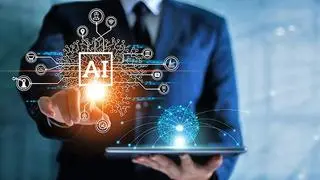Prime Minister Narendra Modi’s three-day visit to the US, beginning on Wednesday, carries with it expectations of a shift in defence-industrial cooperation leading to a long-term roadmap towards achieving a range of goals, including ending regulatory barriers for critical technology sharing, sale of key weapon systems, engagements in artificial intelligence and space, and securing maritime interests, among others.
The coming together of two democracies, from an adversarial position after India was blacklisted following the Pokhran nuclear test in 1998, is accentuated by global insecurities stemming from China’s expansionism and the Russia-Ukraine conflict. The US’s intent, like that of Europe, to replace Russia as the major arms supplier to India also underpins Washington’s efforts to foster a deep defence collaboration with New Delhi. The defence business is set to grow, as the Ministry of External Affairs pointed out that the aggregate value of acquisition from US defence has crossed $13 billion. Americans are understood to have plans to spend over $150 billion in the next decade and a half.
Also read:The import of Modi’s US visit
During Modi’s US visit in June 2016, Washington had scaled up India’s status as a ‘major defence partner’ in a bid to facilitate technology sharing on par with its closest partners, and industry engagement for defence co-production and co-development.
While India is a leading arms importer, despite its strong self-reliance pitch under the Aatmanirbhar Bharat scheme, the US is the biggest exporter of military hardware and software. There are two major defence agreements that the two countries are about to sign besides announcements on shedding regulatory and rule-based obstacles to facilitate trade and sharing of technology.
Which are the two major deals expected to be signed during Modi’s US trip?
Perhaps the most awaited deal is the co-production of GE-F414 jet engine in a collaboration between General Electric and Hindustan Aeronautics (HAL). It will be made public when Modi meets US President Joe Biden in Washington for bilateral talks on June 22. The engines will power the LCA-Mk-II, which HAL is expected to supply to the Indian Air Force apart from exporting them. Reports say that the US will transfer 80 per cent of the technology to India, overcoming objections to sharing with non-NATO countries.
Also read:PM leaves for US, says ‘together we stand stronger in meeting shared global challenges’
This would be the first instance of the US handing over such high-level critical technology to any country. The GE engine technology transfer will allow India to tide over its major shortfall in core defence technology, which is needed for true self-reliance in this sector.
It will alsoboost local R&D in the development of indigenous engines like Kavery, which the DRDO is believed to have at the testbedding stage for UAVs. The same lineage engine, since HAL is also loading the LCA-MKI with GE F404 engines, will help the defence Navratna PSU adjust mechanically and otherwise.
The other deal is the acquisition of 31 MQ-9B Predator armed drones from Genera Atomics under a government-to-government framework at a cost of $3 billion. It’s meant for tri-services — Army, Navy and Air Force. Last Thursday, the Defence Acquisition Council, chaired by Defence Minister Rajnath Singh, cleared the agreement that would be made official in Washington. Dubbed as SeaGuardian, the Navy has already taken two on lease for maritime reconnaissance and surveillance.
General Atomics will also set up a maintenance and repair facility for the armed SeaGuardian.
What are the regulatory obstacles to the technology transfer?
The discussions between the two nations for critical technology sharing is not new but decades old, and the delay is primarily due to regulatory hindrances. But, for the first time, the US is willing to remove barriers, as their National Security Advisor (NSA) Jake Sullivan stated during his visit to New Delhi last week to supervise the preparations ahead of the Modi-Biden meeting. He clearly stated that “obstacles in defence trade, in high-tech trade, in investment in each of our countries” will be dispensed with.
Also read:Unprecedented trust between the leaders of the US and India: PM Modi
“As we look ahead to the state visit Prime Minister Modi will be embarking upon in Washington next week... a number of the deliverables at the visit are not just bullet points on a page. They are fundamentally designed to remove those obstacles in defence trade, in high-tech trade, in investment in each of our countries, in taking away obstacles that have stood in the way of our scientists and researchers,” Sullivan told a gathering of industry representatives in New Delhi.
A private industry CEO dealing with defence said that despite the American promise they could not deliver in the past due to barriers such as the International Traffic in Arms Regulations (ITAR), a regulatory regime that restricts the export of defence technologies to safeguard US national security and promote its foreign policy objectives.
Now, that is being waived off, as pointed out by the US NSA, to facilitate research and academic engagement in 5G and 6G telecom technology, AI, semiconductor supply chains, advanced computing, and biotechnology.
But US companies, too, face a set of hurdles that India is working on for ease of doing business between the two sides. Some of these issues were articulated in a letter that the business lobby group US-India Business Council (USIBC) wrote earlier the Indian Defence Minister. The US companies have also been pushing for friendlier procurement processes and control over properietory technologies. The foreign OEMs equally stressed their reluctance to agree to a contractual clause that makes them liable for product quality alongside their Indian partners.








Comments
Comments have to be in English, and in full sentences. They cannot be abusive or personal. Please abide by our community guidelines for posting your comments.
We have migrated to a new commenting platform. If you are already a registered user of TheHindu Businessline and logged in, you may continue to engage with our articles. If you do not have an account please register and login to post comments. Users can access their older comments by logging into their accounts on Vuukle.